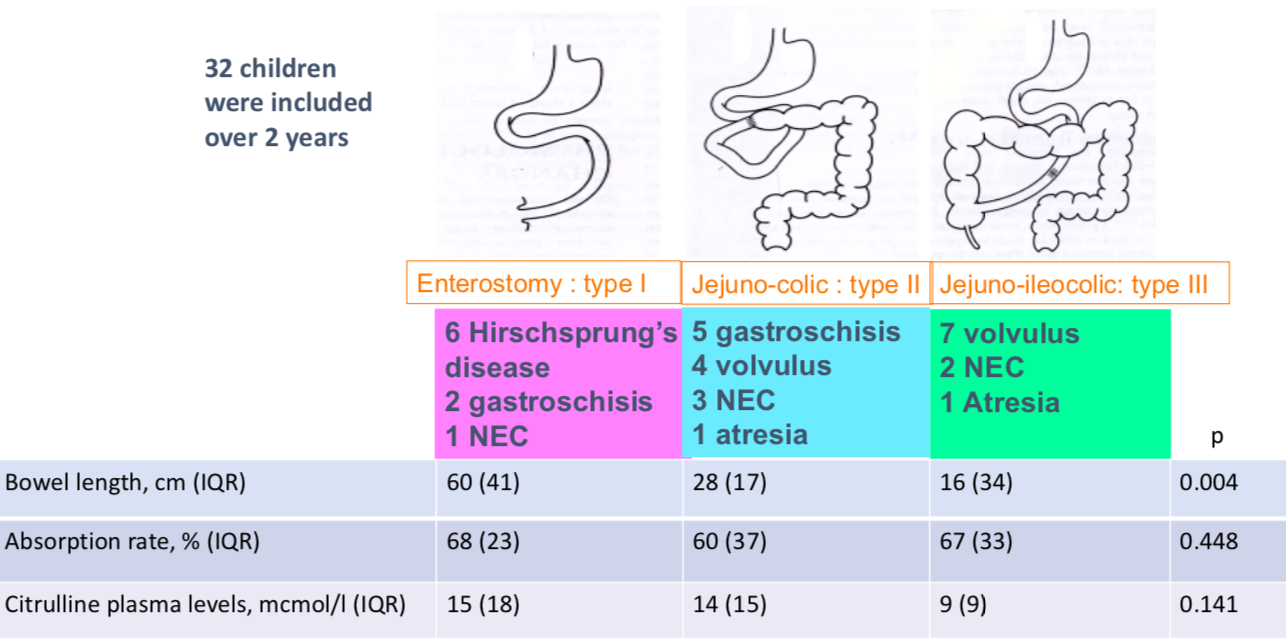Introduction: Short bowel syndrome is the main cause of intestinal failure.The role of the colon as an energy salvage organ has been demonstrated in adult patients but not in children. The aim of this study was to measure the absorption rate in children with SBS using stool balance analysis and to correlate the anatomical SBS type to absorption rate, citrulline plasma level and small bowel length.
Methods: This was a retrospective study over a two years period. All the children older than 1 year with neonatal SBS and PN dependency who underwent a stool balance analysis in our center were included. Children were divided into three groups according to the anatomical type of SBS (ESPEN classification). The level of PN dependency was estimated using the PN/REE index (PN energy intake on resting energy expenditure calculated using Schofield equation). Citrulline plasma levels were measured. Intestinal absorption rate was assessed using the stool balance analysis. Anatomical types of SBS were compared with bowel length, citrulline levels and intestinal absorption rate by analysis of variance. A predicted average percentage of absorption per SBS type, adjusted for relative bowel length was calculated.
Results:

Patients with an intact colon (type 3) had a significantly shorter remnant bowel (p=0.04). Citrulline plasma levels were lower in SBS type 3 patients but not significantly different (p=0.141). Total energy absorption rate did not differ significantly between the three groups. PN dependency index (PN intake/REE) was104% +/- 26%. For the same SB length, absorption rate was 40% in SBS type 1, 70% in SBS type 2, 80% in type 3.
Conclusion: Children with SBS and a remnant colon showed similar absorption rate than children with type 1 SBS although they had significantly lower small bowel length. Citrulline levels did not show a significant correlation with total absorption rate which strengthened the hypothesis that a part of the absorption rate is due to the colon. The citrulline is a strong marker of enterocyte mass but not of colonic mass. This study confirms the role of the colon in energy salvage in children with SBS. Plasma citrulline levels should be interpreted according to the type of SBS – the remnant colon. Efforts should focus on conservative surgery and early restoration of a colon in continuity.
.jpg )